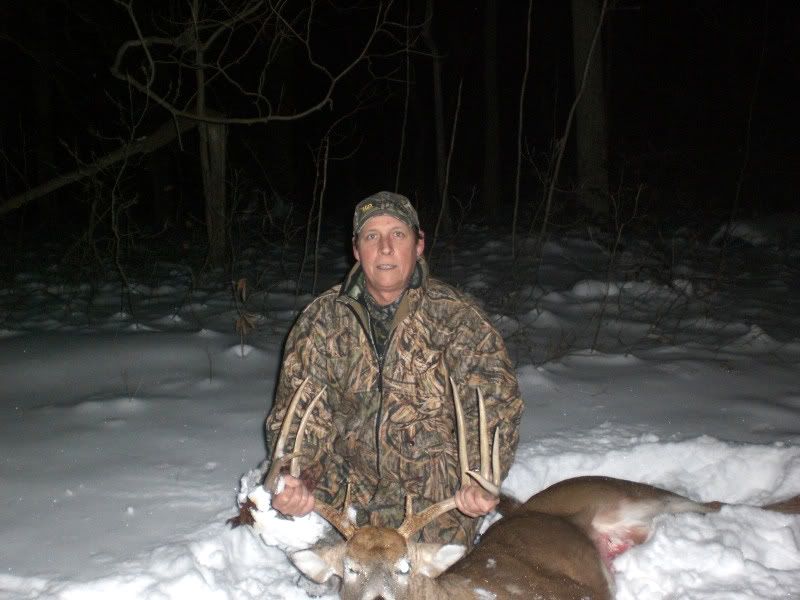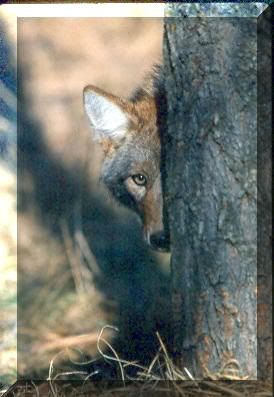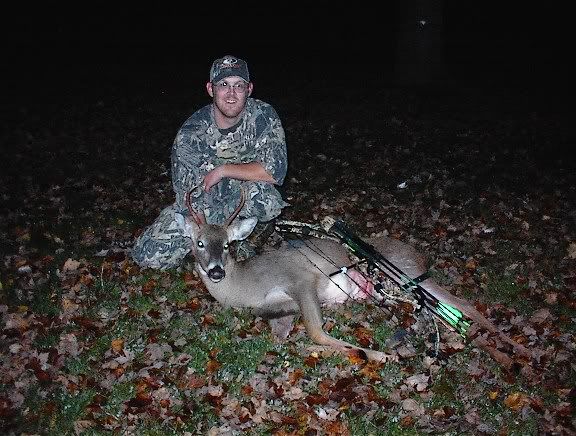Post by freedomrules3 on Aug 1, 2006 20:54:22 GMT -5
interesting little article on spikes from Hunters Specialties site
The Inferiority of Spike Bucks
Editor’s Note: Today outdoorsmen who use Hunter’s Specialties’ products have begun to learn more about the white-tailed deer. In the past, we haven’t known the right questions to ask. But now scientists and researchers have started studying deer more intensely, and here’s what they’ve learned.
Through the years, biologists and hunters have quoted two studies with different outcomes as the gospel concerning spike bucks, one done on the Carr Wildlife Management Area in Texas and the other conducted by Harry Jacobson at Mississippi State University (MSU).
The Texas study reports on the inferiority of spike bucks and proves that 1-1/2-year-old spike bucks don’t produce as many antlers or antlers as large at maturity as branched-antler bucks at 1-1/2-years old do. However, the Jacobson MSU study proves that, at least in the Southeast, late birth and poor nutrition can cause small antlers in 1-1/2-year-old bucks that aren’t genetically inferior. Spike bucks can catch up to the branch-antlered bucks with more age and better food, and often have larger sizes than the bucks that are branch-antlered at 1- to 1-1/2-years old.
A more-recent study by Dr. Mickey Hellickson, the chief wildlife biologist at the King Ranch in Texas, who has the largest sample size in the world of wild bucks with monitoring from yearling to 5- and 6-year old deer, has shown that bucks that start with 3 points at 1-1/2-years of age have statistically-smaller sizes than the bucks with 4 points or more at 1-1/2-years old by the time they reach 5- and 6-years old. The 3-point-and-less 1-1/2-year-old bucks score about 20 inches smaller on Boone & Crockett at 5- and 6-years old than the bucks with 4 points or more at 1-1/2-years old do at ages 5 or 6 years.
In Hellickson’s Texas study, he’s managed all these bucks under a quality deer management program or a trophy-deer program and fed all the deer supplementally with highly nutritional food. The size of the deer herd is kept under high restrictions so that there’s no reason for a deer to have less than 3 points at 1-1/2-years old or older. If you compare this statistic to the late rut in Alabama when does have fawns in August or September, you certainly can see why a buck can’t have 4 to 6 points by hunting season.
Brian Murphy, executive director of the Quality Deer Management Association (QDMA) in Bogart, Georgia, a great organization that Hunter’s Specialties sponsors, concludes that in the South, spikes serve as more of an indication of age and nutrition rather than a sign of inferior genetics. No blanket answer like one shoe fits all explains deer herds. The availability of food, the health of the herd, the size of the herd and many other factors, besides strictly genetics, play roles in antler development.
The more we learn about deer, the more we realize that we can best manage deer on a property-by-property basis, since researchers have found very few absolutes. Never set up a deer-management program based on what other people have done in other areas. Instead, determine the best type of deer-management program for the hunters in your club, the deer on your property, the soil types, vegetation and the terrain you hunt.
www.hunterspec.com/Updateable/update_display.cfm?pageID=2044&categoryID=12
The Inferiority of Spike Bucks
Editor’s Note: Today outdoorsmen who use Hunter’s Specialties’ products have begun to learn more about the white-tailed deer. In the past, we haven’t known the right questions to ask. But now scientists and researchers have started studying deer more intensely, and here’s what they’ve learned.
Through the years, biologists and hunters have quoted two studies with different outcomes as the gospel concerning spike bucks, one done on the Carr Wildlife Management Area in Texas and the other conducted by Harry Jacobson at Mississippi State University (MSU).
The Texas study reports on the inferiority of spike bucks and proves that 1-1/2-year-old spike bucks don’t produce as many antlers or antlers as large at maturity as branched-antler bucks at 1-1/2-years old do. However, the Jacobson MSU study proves that, at least in the Southeast, late birth and poor nutrition can cause small antlers in 1-1/2-year-old bucks that aren’t genetically inferior. Spike bucks can catch up to the branch-antlered bucks with more age and better food, and often have larger sizes than the bucks that are branch-antlered at 1- to 1-1/2-years old.
A more-recent study by Dr. Mickey Hellickson, the chief wildlife biologist at the King Ranch in Texas, who has the largest sample size in the world of wild bucks with monitoring from yearling to 5- and 6-year old deer, has shown that bucks that start with 3 points at 1-1/2-years of age have statistically-smaller sizes than the bucks with 4 points or more at 1-1/2-years old by the time they reach 5- and 6-years old. The 3-point-and-less 1-1/2-year-old bucks score about 20 inches smaller on Boone & Crockett at 5- and 6-years old than the bucks with 4 points or more at 1-1/2-years old do at ages 5 or 6 years.
In Hellickson’s Texas study, he’s managed all these bucks under a quality deer management program or a trophy-deer program and fed all the deer supplementally with highly nutritional food. The size of the deer herd is kept under high restrictions so that there’s no reason for a deer to have less than 3 points at 1-1/2-years old or older. If you compare this statistic to the late rut in Alabama when does have fawns in August or September, you certainly can see why a buck can’t have 4 to 6 points by hunting season.
Brian Murphy, executive director of the Quality Deer Management Association (QDMA) in Bogart, Georgia, a great organization that Hunter’s Specialties sponsors, concludes that in the South, spikes serve as more of an indication of age and nutrition rather than a sign of inferior genetics. No blanket answer like one shoe fits all explains deer herds. The availability of food, the health of the herd, the size of the herd and many other factors, besides strictly genetics, play roles in antler development.
The more we learn about deer, the more we realize that we can best manage deer on a property-by-property basis, since researchers have found very few absolutes. Never set up a deer-management program based on what other people have done in other areas. Instead, determine the best type of deer-management program for the hunters in your club, the deer on your property, the soil types, vegetation and the terrain you hunt.
www.hunterspec.com/Updateable/update_display.cfm?pageID=2044&categoryID=12








